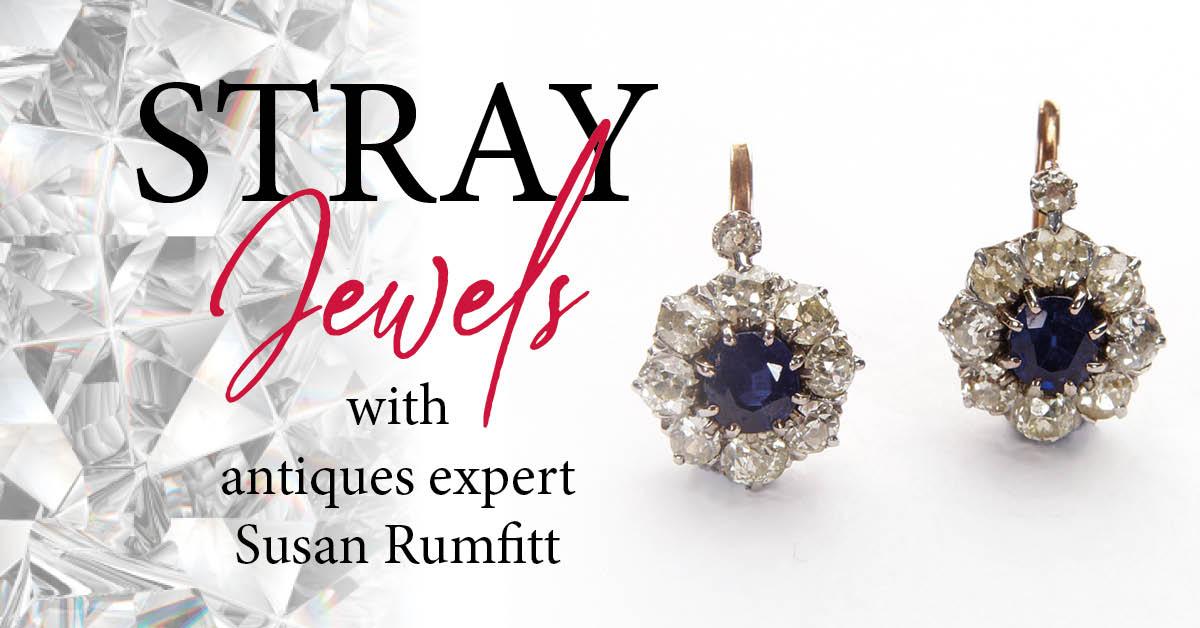Subscribe to trusted local news
In a time of both misinformation and too much information, quality journalism is more crucial than ever. By subscribing, you can help us get the story right.
- Subscription costs less than £1 a week with an annual plan.
Already a subscriber? Log in here.
20
Jun 2021
Stray Jewels with Susan Rumfitt: Sapphires Aren't All Blue


 Stray Jewels is a monthly column written by BBC Antiques Roadshow jewellery specialist, Susan Rumfitt. Susan started her career working for Christie’s auctioneers in Glasgow before establishing her own jewellery department, The Gallery in Harrogate. In 2006, she joined the Antiques Roadshow and has since built up an extensive knowledge of and passion for fine jewellery. This week Susan looks at one of her favourite gemstones: sapphires.
Stray Jewels is a monthly column written by BBC Antiques Roadshow jewellery specialist, Susan Rumfitt. Susan started her career working for Christie’s auctioneers in Glasgow before establishing her own jewellery department, The Gallery in Harrogate. In 2006, she joined the Antiques Roadshow and has since built up an extensive knowledge of and passion for fine jewellery. This week Susan looks at one of her favourite gemstones: sapphires.
I recently looked at an amazing multi-coloured sapphire bracelet by the Swiss gem suppliers, designers and gemstone laboratory experts Gubelin on the Antiques Roadshow and many clients have been amazed at the variety of different coloured sapphires that were in the bracelet.
Myths, Legends and Famous Stones
Sapphire is from the Greek word Sappheiros meaning blue and was associated with the God Apollo and with celestial power. It is the birthstone for September and is the stone that represents the 45th wedding anniversary. It also symbolises sincerity, truth, faithfulness and nobility. The Greeks and Romans believed that it would protect them from harm and the envy of others.
In our Crown Jewels there is a sapphire set in the Imperial State Crown which weighs 104 carats and is called the Stuart Sapphire. Wallace Simpson, Duchess of Windsor owned an adorable panther brooch made by Cartier in 1949. The leopard is leaning over a 157.35 carat cabochon polished sapphire. It is stunning. In 2011 Christie’s sold the jewellery collection of Elizabeth Taylor and within the collection was a sapphire and diamond necklace by Bulgari which sold for over $5 million.
Colour
The traditional colour of sapphire is of course blue, with a variety of different shades depending upon where the sapphire has originated from. The finest stones are said to originate in Kashmir, Sri Lanka (Ceylon) or Myanmar (Burma) and untreated gems from these regions can command very high prices. Kashmir sapphires are no longer mined as supplies ran out by 1920, so they are particularly sought after. Sapphires from Kashmir and Myanmar tend to be a mid blue with a beautiful velvety appeal. Those from Sri Lanka tend have a cornflower blue colour. Another popular source for sapphires, particularly in the 1970’s and 80’s was South Africa. These tend to be a much darker blue.
The chemical name for sapphire is corundum and the chemical composition is Aluminium Oxide. Each colour is caused by differing chemicals. Blue - iron and titanium; green - iron or iron with titanium; yellow – iron; purple - iron, titanium and chromium; pink – chromium; colour change sapphire which changes from blue to purple - chromium, vanadium, iron and titanium; orange colour is caused by the presence of iron. One of the rarest colours is a peachy colour which is caused by iron and chromium and known as padparadscha.
What to look for when buying a sapphire
Whatever your preferred colour there are some key factors to take into consideration when buying a stone. Make sure that the colour is uniform throughout the stone. The colour should be bright and lively and have an intensity but not to the point that it looks dark and lifeless. Sapphires are quite hard stones, just below diamond on the official hardness scale, but are prone to chipping and wear. Check that the surface of the stone isn’t badly scratched. Scratches can be polished out, but this does mean the size/carat weight of the stone will be reduced. The internal quality/clarity of the stone is also extremely important. Crystal inclusions are common in gemstones and do add character but the clearer the stone the more valuable it will be. Inclusions can be mesmerising and are particularly fascinating when they form a star effect in the sapphire. This is a result of the light reflecting on inclusions called rutile needles which have formed in a particular way within the sapphire.
Next time you notice how blue the sky is, think of the ancient Persians. They believed that the Earth rested on a giant sapphire that turned the sky blue -how fantastic that would be!
Read More:
- Stray Jewels with Susan Rumfitt: Art Deco Delights
- Stray Jewels with Susan Rumfitt: the timeless allure of pearls
0